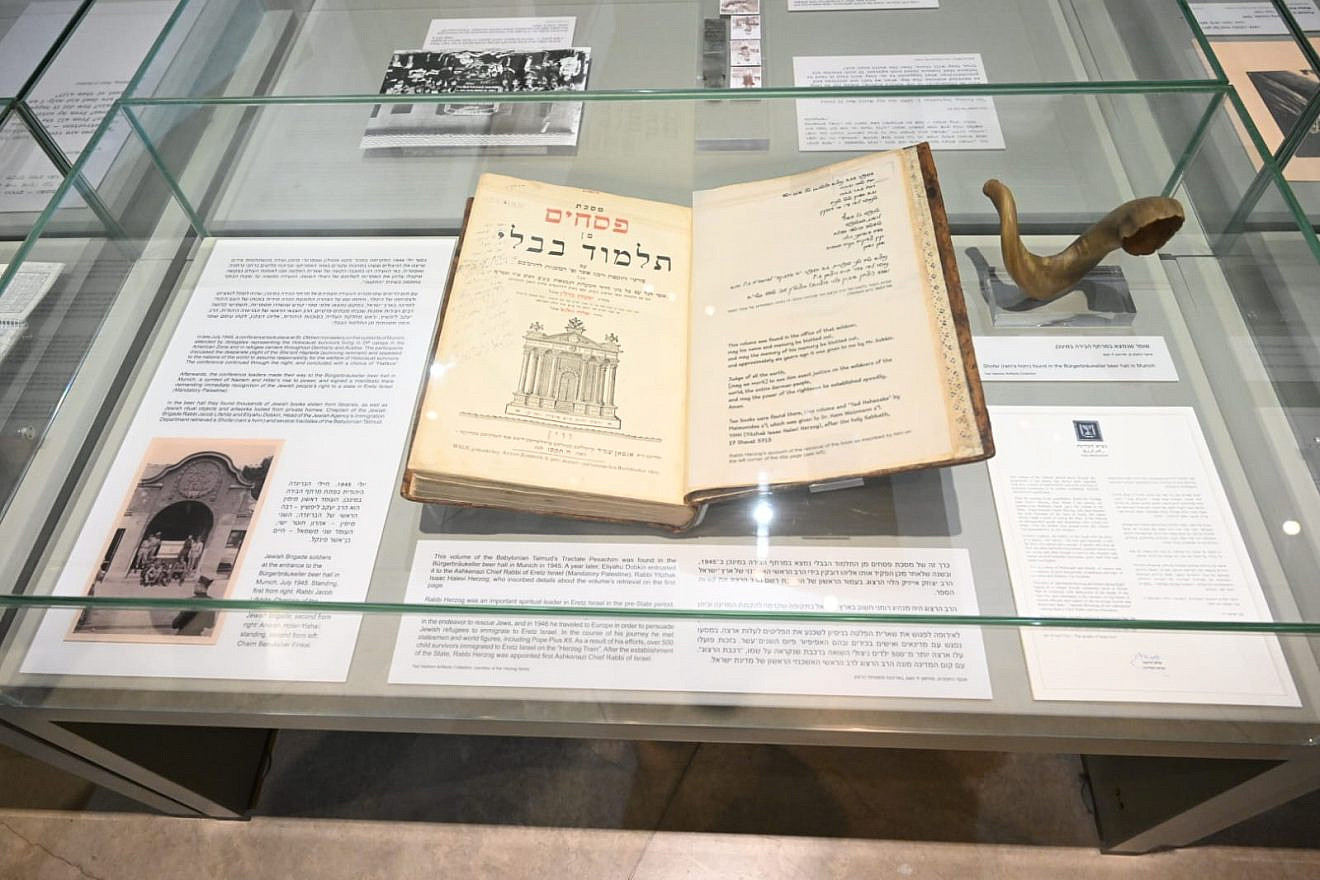A rare volume of the Talmud printed before World War II and found unscathed in a historic Munich beer hall after the Holocaust was given to the Yad Vashem Holocaust Museum on Wednesday by the family of President Isaac Herzog.
The Pesachim Tractate of the Babylonian Talmud has been in the family’s possession for the last eight decades; it will be permanently displayed at the museum in Jerusalem.
The book was discovered amid many other religious artifacts in the Bürgerbräukeller beer hall in Munich in 1945 and was entrusted to Rabbi Yitzhak Halevi Herzog (1888-1959), grandfather of the current president of Israel. The rabbi was the chief Ashkenazic rabbi of Eretz Israel and a prominent religious leader during the pre-state period.
The Bürgerbräukeller was where Adolf Hitler launched the Beer Hall Putsch in November 1923, and where he announced the re-establishment of the Nazi Party in February 1925. In 1939, the beer hall was the scene of an attempted assassination of Hitler and other Nazi leaders by Georg Elser.

The tractate discusses topics related to Passover and the Passover sacrifice.
It was passed from Rabbi Herzog to his son, the sixth president of Israel, Chaim Herzog (1918-1997), and his wife, Aura (1924-2022). The family subsequently decided that Yad Vashem was the proper place for the book’s safekeeping.
“The tractate’s journey embodies, in many ways, the story of a family, my family, but above all, it tells the story of a nation and the story of a people,” Herzog said at Yad Vashem on Wednesday. “A people who rose from ashes and built a home. Not just any home, but one with strong roots that run deeper than any disaster, and whose branches, though well-known, continue to grow, bear fruit and climb ever higher.
“This is a story of destruction and rebirth; of mourning and rebuilding; of darkness and light; of redemption and freedom,” he added.
Yad Vashem Chairman Dani Dayan said, “By including this rare artifact in the Holocaust History Museum we can illuminate the vibrant tapestry of Jewish life in pre-Holocaust Europe and the subsequent horrors.
“Its unveiling, just before Jews around the world gather at their Seder tables to recount the Exodus from Egypt and our emergence as a nation, is especially poignant. As we fulfill the timeless commandment to remember the past, we affirm the enduring perseverance of the Jewish people throughout the ages,” Dayan said.


























